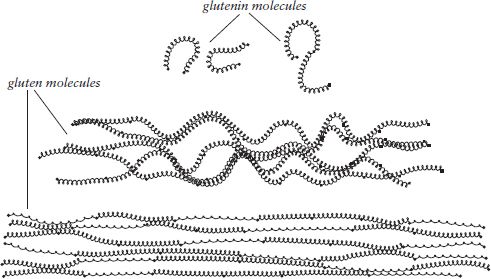Advertisement
Gluten Plasticity and Elasticity
Appears in
By Harold McGee
Published 2004
The gluten of the bread wheats is both plastic and elastic; that is, it will change its shape under pressure, yet it resists the pressure and moves back toward its original shape when the pressure is removed. Thanks to this combination of properties, wheat dough can expand to incorporate the carbon dioxide gas produced by yeast, and yet resists enough that its bubble walls won’t thin to the breaking point.

Gluten formation. When flour is mixed with water and made into a dough, glutenin protein molecules link up end-to-end to form long, composite gluten molecules. Dough is elastic because the gluten molecules are coiled and have many kinks in them. When a mass of dough is stretched, the kinks are straightened out, the coils extended, and the proteins get longer (bottom). When the stretching tension is released, many of the kinks and coils re-form, the protein mass shortens, and the dough shrinks back toward its original shape.


